Virtual reality (VR) training can transform traditional learning, increase engagement and retention, and enable scalability and cost savings. Emily Cooper, SweetRush XR Producer, and Tobias Washington, Head of Talent Technologies, Innovation, and Creative Solutions at CHRISTUS Health have answers to important questions about the development and successful implementation of a VR safety training program.
At our webinar, VR Training Program Case Study: Aggressive Behavior De-escalation at a Healthcare Sector Organization, SweetRush and CHRISTUS Health shared the behind-the-scenes story of a VR learning program aimed at de-escalating aggressive behavior in healthcare settings.
Emily Cooper, SweetRush XR Producer, and Tobias Washington, Head of Talent Technologies, Innovation, and Creative Solutions at CHRISTUS Health, covered the insights and the benefits of VR as an essential, effective, and safe training solution.
We want to thank the webinar participants for their excellent questions. As promised, here are answers to the questions we didn’t have time to answer live!
General VR Training Questions
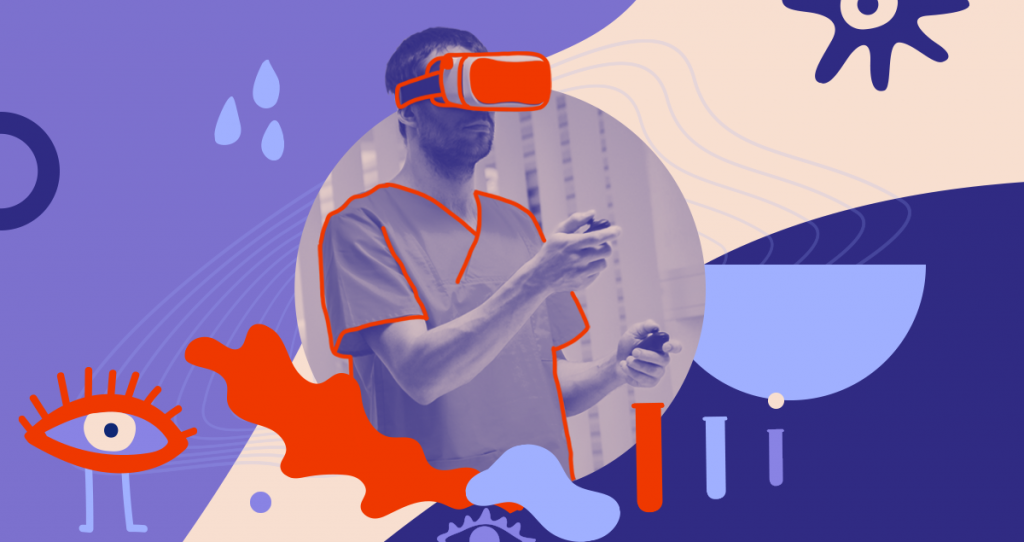
What do you think of cardboard single-use headsets?
Cardboard single-use headsets were, at one point, a popular VR delivery method. As we explored their use for VR training, however, we came across some important factors to consider:
- Lowest common denominator. The delivery device for a cardboard headset is the smartphone. Therefore, when designing VR, you need to think about the lowest-performing smartphone in your target audience. This often calls for simplifying the experience and creates limitations on what you can design.
- Immersion. Without a doubt, immersion is a big factor in the VR training experience because it heightens engagement, which is certainly part of the formula for achieving an effective training program. It’s difficult to create a sense of immersion with the level of content you can produce for a cardboard headset.
- Price. Even though cardboard headsets are inexpensive, you will still need a smartphone to run the VR training. So if you need to provide all the equipment (and can’t rely on BYOD), the Oculus Quest VR headset, a premium stand-alone device, will cost you less than your average smartphone.
What do you think about VR training experiences? Are they more efficient than the traditional approach?
VR training is often more time-efficient than traditional training. VR is best suited to short burst training—10 to 20 minutes is the sweet spot. VR is not one-and-done training. Instead, learners can repeat the training and log multiple practice sessions. Learn more in Your Guide to VR Training Programs: Virtual Reality for Our New Reality.
We are looking to develop VR training programs. Personally, I have an Oculus Quest, and it makes me very dizzy. I can stay in my headset for only about 10 minutes. When thinking about deploying VR to an employee population, how do you mitigate that? Do you create a separate non-VR training for those who can’t tolerate VR? Also, are there any Americans with Disabilities Act (ADA) concerns to consider?
We’re sorry to hear you’re experiencing sensitivity in your headset; it’s true that it does happen for some people. Fortunately, a fair amount of research has been done in this area, and we monitor the latest findings to help optimize our VR learning programs. After all, our goal is to create VR experiences that are comfortable and enjoyable!
In the research, there are strong correlations between how the VR content is created and optimized and the potential for experiencing dizziness. Technical elements, if done correctly, can help mitigate these adverse effects. Additionally, headset technology is getting better and better, which has reduced this problem over time and will continue to do so as the technology advances.
An alternative for people who are highly sensitive is a WebVR version. WebVR has limitations and isn’t the right choice for every learning program, but it can be used to create an experience that can be accessed through a browser rather than a headset.
Regarding ADA, understanding your audience members and their needs is your first step in determining whether VR is the right solution for your learning program. If designed with ADA needs in mind, VR can be a great solution for many people with disabilities; at the same time, as a visually driven platform that often requires physical movement, it can exclude some people. The World Wide Web Consortium has a good article about the issues and opportunities of VR accessibility. The article mentions some interesting disability-related uses for VR—for example, simulations that help people adjust to new disabilities or help learners empathize with people who have disabilities.
Typically, which VR training approach is more expensive to develop? 360 video or computer-generated imagery (CGI)?
It depends! We recommend keeping an open mind as you define your performance and learning objectives at the start of your project. This will help you determine what VR environment you need and what you want learners to be able to do and practice in your program. A simple live-action 360 video experience may suffice. Or, on the other end of the spectrum, you may need a stereoscopic 360 camera and many actors, or you may choose something in between. The same goes for CGI: you may be able to use inexpensive stock assets, or it might be necessary to go full-blown motion capture style. Or, again, you may find a happy medium. Both 360 video and CGI can be done simply and relatively inexpensively, and both can be more complex and expensive. Your desired learning outcomes should always guide your choices.
How should I build a business case and persuade the business and budget owners (especially in the COVID-19 era) to invest in VR solutions? And what’s the best way to start an implementation in a company? Small group? Big program?
We have a great section on building a business case in our eBook Virtual Reality for Our New Reality. Here are some of our key recommendations:
- Invest in a few headsets for key team members. VR is a “see it to believe it” technology!
- Introduce VR as a Learning and Development (L&D) opportunity. We’ve had several clients do this by bringing us in for an XR workshop. Your stakeholders get to learn about the technology, and there’s time designated for brainstorming VR training use cases for your organization. (Note: We can do this workshop virtually.)
- Choose a performance challenge that’s significant and ongoing, as Tobias mentioned in the workshop.
- Start with a proof of concept—many of our clients have had great success doing this. This often means creating a small part of a bigger program. A proof of concept gives stakeholders a taste of what’s possible, gives you a chance to test the process (and your vendor), and results in a tangible program you can share.
Since you mentioned COVID-19, it’s worth stating that there are many new strong use cases for VR that allow people to practice together safely. Think about redirecting unused travel funds toward an investment in VR equipment and content.
About the CHRISTUS Project
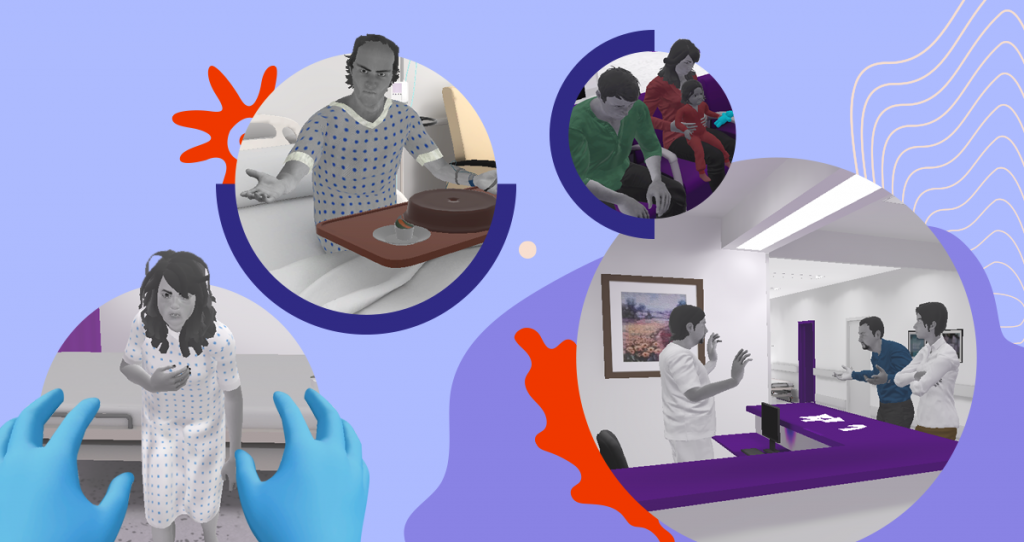
Program and Project Management Questions
How many people were involved in this amazing project, and what roles did they play?
Thank you—we’re very proud of the collaboration! At SweetRush, we had one Instructional Designer, one XR Producer, one Project Manager, five 3D Designers and Animators, four Programmers, and two Audio Engineers. We also had a QA team that performed play testing.
On the CHRISTUS side, about 20 stakeholders and associates participated in the on-site XR Workshop with SweetRush. Throughout the development of the project, stakeholders were kept abreast of progress and weighed in at key milestones. Associates, who represented the target audience, shared ideas, experiences, and feedback. Throughout the process, it was important to engage those whom the training would affect. The specialized team of five to six people who worked permanently on the project with SweetRush was in weekly communication throughout the entire project. As the VR safety training is rolled out, we expect this team to grow.
What testing techniques did you use throughout the process to make sure you were building the right user experience?
Great question. Put together, the members of the SweetRush SPARK team have deep experience in instructional design, game design, and VR and app development, so all of these disciplines inform our process and approaches to ensure an optimal learner experience.
Our process for any learning program starts with deeply understanding our audience, which we do by working closely with our client. The amazing stakeholders we worked with shared important insights about the learners at CHRISTUS and how we should tailor the experience to meet their needs.
At SweetRush, we’ve merged instructional design with game design, and our iterative design process lets us test approaches with our client and users and identify the approaches that resonate with learners.
During development, we look to optimize the experience from a performance perspective. In this case, each activity had many components, so ensuring that the experience ran smoothly in the headset was important.
Finally, we invest significant time in play testing, both internally at SweetRush and externally with our client. Play testing can show us where we need to tweak the user experience. One part of the program we focused on was getting the body movement tracking correct to give the user the accurate feedback.
Development/Technical Questions
What engine did you build this VR training in? Unreal or Unity? How did you make this decision?
Unity engine. In our experience, Unity is more flexible with third-party technologies, which were essential for the voice and tone recognition and analysis requirements of this program. We also find that Unity enables faster custom development and implementation of new technologies. We use Unreal Engine in other situations, but in this case, given the requirements of the project, the Unity Engine was the right choice.
Program Design
Is the scoring directly related to how people are evaluated?
The goal is to tie the two parts of this safety training program (the classroom training portion and the VR training portion) to an overall clinical de-escalation program that CHRISTUS is implementing. Through the point system and data tracking of the VR, CHRISTUS will be able to see which individuals can correctly apply the proper approaches and techniques. As the program rolls out, CHRISTUS expects to see how it integrates into evaluation.
Was timing a metric in completing an activity/exercise?
We considered using a timing metric during the design phase of the project. We tested how this could be implemented in each scenario and decided that a timing metric did not support our learning objectives. One of our goals was to give learners an environment in which they could learn at their own pace. The program definitely has stakes and consequences, but we chose to design them without integrating a time factor.
Was there any decision-based branching in the simulations (e.g., going down a different path based on a particular response)?
The verbal de-escalation scenario includes “mini” decision-based branching narratives based on the learners’ answers. For every step of the scenario, the avatar reacts to what the learner says. Because the learner cannot progress to the next step without giving the correct answer, the scenario does not branch as entirely different narratives, but each step can have a narrative.
Avatars
Aside from the facial diversity, was there a challenge in terms of the users’ spoken language (e.g., English, Spanish, European, etc.)?
The target audience for this project is hospital health care and security professionals, which is primarily an English-speaking audience. For this phase of the program, we decided to focus on processing one language. There has been some discussion about integrating additional languages into future versions of the program.
Analytics
What tool did you use for analytics? Did you hand-code them or use a plug-in, off-the-shelf, or third-party tool?
The VR Dashboard was built internally by our SweetRush SPARK team. VR analytics and reporting have exciting potential for L&D. Compared with other training delivery methods, the VR headset lets us track more data about the learner experience. We can also use the data in real time to provide immediate feedback to the learners or trigger events in the headset based on their actions. Combined with a great assessment strategy outside the headset, analytics presents a significant opportunity as a pathway to improving learner experiences and learning outcomes.
Was this dashboard built specifically for this project, or is it a customized learning record store or learning management system that multiple projects are hosted on?
We customize the VR Dashboard to meet the needs of individual clients and projects, so it can be deployed separately, rather than living in a single platform. Because we created the code, we can adjust the way information is gathered and presented.
Distribution and Maintenance
Did you distribute the headsets to the trainees, or did they purchase the VR headsets?
The CHRISTUS team purchased the headsets and will distribute them to several of their ministry (hospital) locations, where training rooms will be created.
Do you have designers/developers now that can update or make changes going forward?
As we shared in the webinar, the VR learning program created for CHRISTUS is a higher-complexity experience. It has a custom CGI world/environment, many avatars, and several integrated technologies for voice and tone recognition and analysis, body movement tracking, and analytics. Given its complex nature, the program will require an experienced VR team to maintain the program moving forward.
That said, some organizations are dedicating resources to exploring VR development internally, and some authoring tools coming on the market can create VR learning experiences with simple interactivity. As the technology advances and more organizations adopt VR, it’s easy to imagine a model similar to eLearning, in which organizations can create and maintain a certain level of complexity internally and can call on great vendor-partners to help with more complex and interactive programs.
For this project, CHRISTUS will work with SweetRush if any updates, changes, or additions are made moving forward.
Applying the VR Training to Other Uses
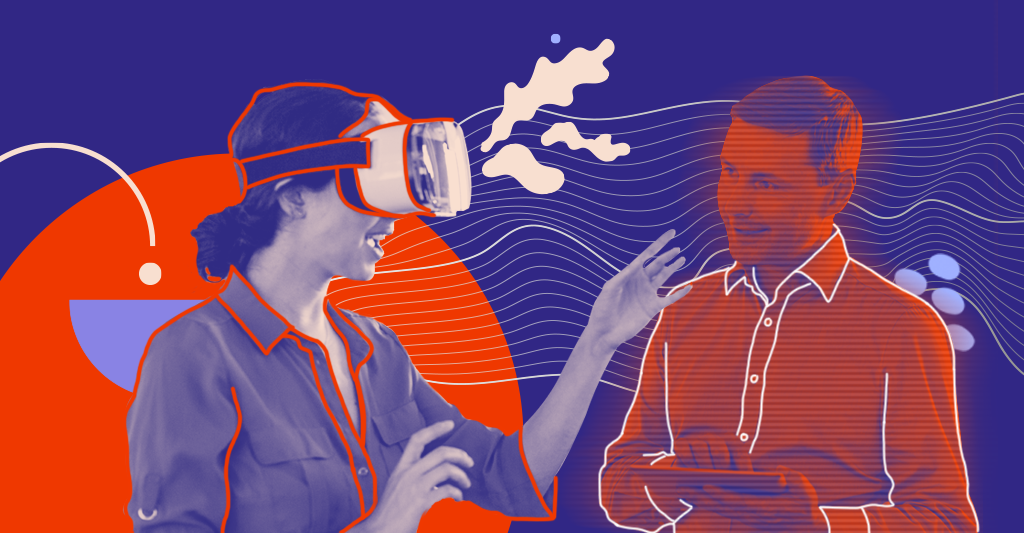
How could the VR training solution be useful in a manufacturing environment?
The manufacturing industry is rich with opportunities for using VR as an L&D tool. VR training can help develop the specialized skill sets needed in the sector and to conduct safety training in manufacturing environments. If you need training in the use of specific machinery, you can replicate that training in a VR environment. Not only can you create a place to interact with expensive machinery safely, but you can also use haptic feedback to create sensory input within the training. Because of its immersive nature and ability to evoke emotional responses and offer interaction that mimics real-life behaviors, VR is a great solution for the manufacturing industry.
Can this type of VR solution be used in community settings?
VR can be used in many settings, including education, community outreach, entertainment, and enterprise. If your community is trying to shift a thought process or behavior, VR could be a great option. For example, if a small community wants to promote acceptance and understanding, a VR experience that addresses unconscious bias may be the answer. The possibilities are endless. You could set up a VR center at a library, sanitizing headsets after each use, so people can participate.
How can the Oculus Rift be used for health care?
The Oculus Rift can be used for technical and safety training simulations and soft skills and empathy training. Live training that is costly or dangerous is a good candidate for VR training. Read about VR training use cases in Your Guide to VR Training Programs: Virtual Reality for Our New Reality.
How can VR training improve health care?
In the VR world, learners have a safe place to practice, receive real-time feedback, and replay scenarios and activities multiple times. Instructors and peers can be “in the room” observing or providing guidance. Read about VR training use cases in Your Guide to VR Training Programs: Virtual Reality for Our New Reality.
VR Trends
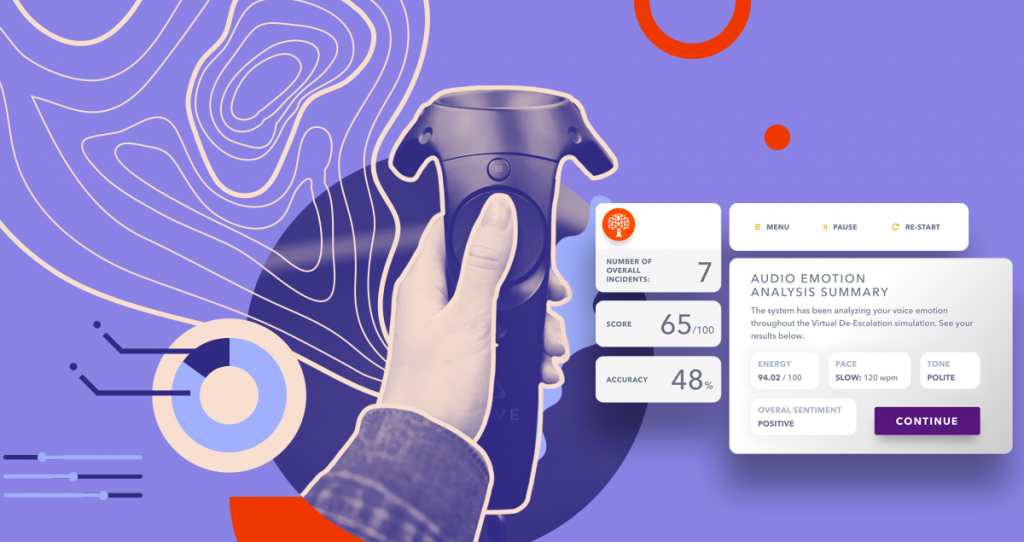
What’s the next step in virtual reality?
Learning trends in VR include multilearner experiences, instructor-led learning experiences, voice recognition and tone analysis, body movement tracking, facial recognition, integration of biometrics, and learning analytics. Learn more in Your Guide to VR Training Programs: Virtual Reality for Our New Reality.
Could you talk more about biofeedback in VR training? How would it work, and what data could you gather?
Biofeedback is an exciting element of data capturing and tracking in VR. How biofeedback is used can range widely. It can include simplistic heart rate monitoring, in congruence with the training program, to see how learners react under different conditions. Or it can involve mapping brain activity and breathing patterns, tracking muscle contraction, and using this data and feedback to help change behavior and mental patterns in patients through VR training programs.
For the most part, to track biometric feedback, you need wearable devices: outside trackers, monitors, or equipment to add biofeedback to your VR solution. This is an exciting advancement in our field, and we’re seeing several head-mounted display (headset) manufacturers explore how they can integrate some of this tracking in their headsets without the need for additional equipment. Because of the excitement and potential for enterprise around biofeedback, we can expect leading companies to put time and resources into this effort—meaning we can look forward to advances in this area.
If you are eager to learn more about VR training programs, use cases, and success stories, download the Virtual Reality for Our New Reality eBook.
EXPLORE THESE ADDITIONAL RESOURCES
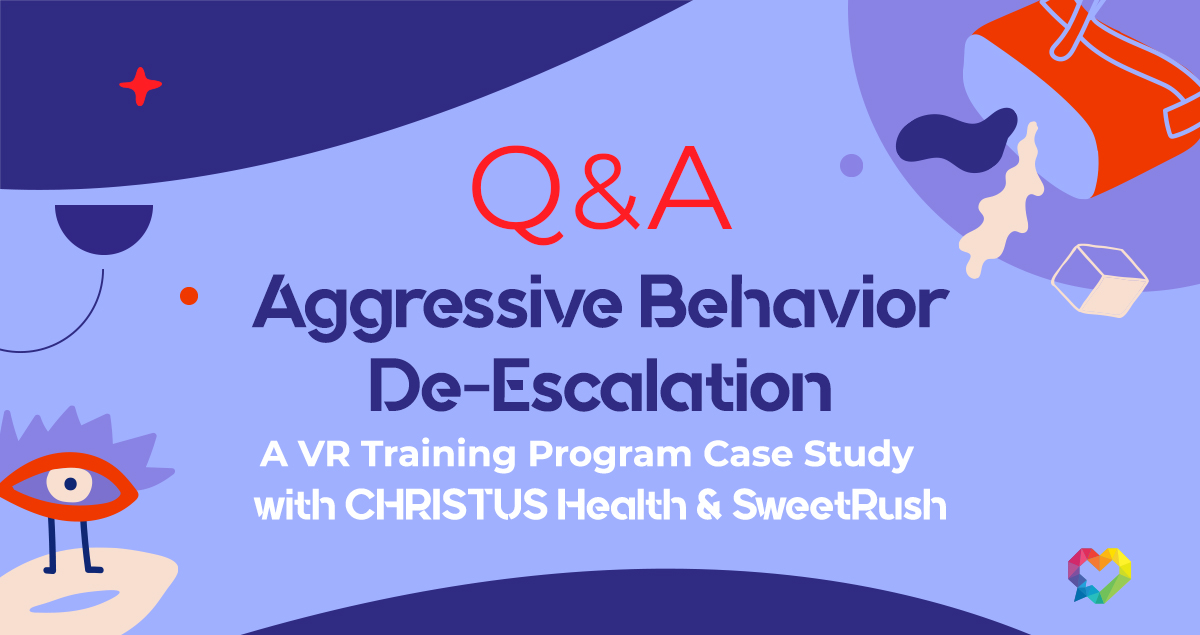
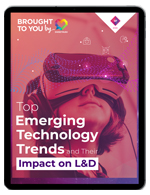 Top Emerging Technologies Trends and Their Impact on L&D
Top Emerging Technologies Trends and Their Impact on L&D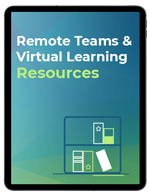 Leading Remote Teams: Free Learning Resources
Leading Remote Teams: Free Learning Resources


